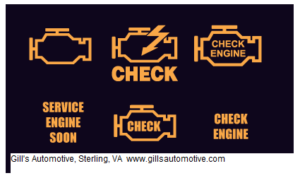Posted on 9/28/2017

Check Engine Light troubles can be a headache for a car owner, but you shouldn’t ignore the problem it indicates. When your vehicle’s dreaded “Check Engine” light comes on, you usually feel that sinking feeling. The “Check Engine Light” is a signal from the car’s engine computer that something is wrong. It can be a very costly issue such as a bad catalytic converter, or something as minor as a loose “gas cap”. What it definitely means, though, is that you will be visiting your trusted auto repair shop to diagnose the issue. Deciphering the CodeDo-It-Yourselfers can buy inexpensive code readers that connect to this standardized onboard diagnostics (OBD) port located under the steering column. You can then search for the code’s meaning on websites such as https://www.engine-light-help.com/. The Check Engine light can even be turned off by some code ... read more
Posted on 9/20/2017
As vehicles age and accumulate miles, it’s common for the timing belt to wear out and become compromised. Timing belt replacement is a relatively simple service to perform. However, if a worn out timing belt snaps, it can seriously damage your engine. This can cost you thousands of dollars. The Role of the Timing Belt Your vehicle’s timing belt is a small rubber belt that connects the crankshaft to the camshaft which controls when the valves open and close. Timing belts are developed to be strong and durable, but they will eventually wear out. When the belt breaks, the valves won’t close in time, and the pistons hitting against them begin to cause immediate engine damage. Replacement of your vehicle’s timing belt is part of the regular auto maintenance recommended by the manufacturer. Timing belt replacement should be done approximately every 70,000-110,000 miles. You should check your owner’s manual for specific recommendations. Replaceme ... read more